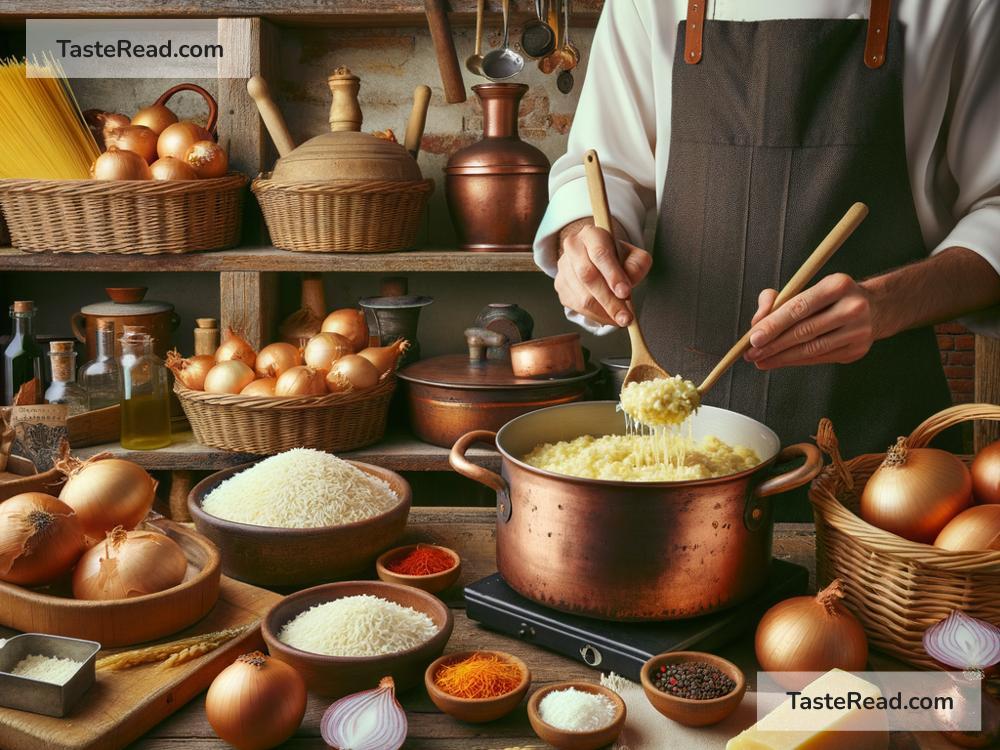The History of Italian Risotto: A Delicious Tale
When people think of Italian cuisine, they usually think of pizza, pasta, and gelato. But another dish stands proudly in the culinary lineup—risotto. This creamy, flavorful rice dish has delighted people for centuries, and its history is as rich as its taste. In this blog, we’ll dive into the origins of risotto, its development over time, and how it became a favorite around the world.
Where It All Began: Rice Comes to Italy
The story of risotto starts in the 14th century when rice first arrived in Italy. Rice came to Europe through Arab traders who introduced it to the fertile lands around the Mediterranean. In Italy, the northern regions—especially the Po Valley—were perfect for growing rice because of their rich soil and abundance of water.
By the 15th century, rice farming was thriving in northern Italy, particularly in regions like Lombardy and Piedmont. Rice became a key staple food, especially for the lower classes. It was affordable, filling, and easy to grow. Farmers cultivated a variety of rice called short-grain rice, which would later become an essential part of risotto.
The Birth of Risotto: Merging Rice with Creativity
While rice was already popular in Italy, risotto as we know it started to take shape in the 16th century. Italians love experimenting with food, and cooks soon discovered that cooking rice slowly, while stirring constantly, created a creamy texture. This was due to the starch released by short-grain rice varieties such as Arborio, Carnaroli, and Vialone Nano.
The word “risotto” comes from the Italian word riso, meaning “rice,” and refers to the technique of cooking rice in a broth. Unlike boiled rice dishes, risotto is cooked slowly with a combination of broth, butter, onions, wine, and other ingredients. This process makes the rice creamy without needing cream.
In the early days, risotto became popular as a perfect base dish to combine with local ingredients. Farmers and cooks could add vegetables, cheese, meats, or seafood depending on what was available during the season. Over time, risotto transformed from a simple humble dish into something sophisticated and full of flavor.
A Famous Legend: Risotto alla Milanese
One of the most famous risotto recipes, Risotto alla Milanese, has an interesting story behind it. This signature dish from Milan uses saffron, which gives the rice its iconic golden color. The legend goes back to the 1500s during the construction of Milan’s Duomo, the city’s famous cathedral.
According to the story, one of the stained-glass artisans nicknamed “Zafferano” (Italian for saffron) loved using the spice to color his paints. During a wedding celebration, he decided to add saffron to rice as a joke—or perhaps to impress the guests. The result was a golden-colored dish that everyone fell in love with. Since then, Risotto alla Milanese has become a classic recipe, known for its bold flavor and stunning appearance.
The Evolution of Risotto in Italian Regions
Risotto recipes vary across Italy, depending on the region and what ingredients are available locally. In the northern regions, where rice is cultivated, risotto became especially popular and developed distinct styles.
-
Lombardy (Risotto alla Milanese): Known for its saffron-infused risotto, Lombardy is home to the dish that started it all.
-
Veneto (Risi e Bisi): In Veneto, risotto is often made with green peas and pancetta, creating a simple yet delicious “rice and peas” dish.
-
Piedmont (Risotto al Barolo): This region is famous for its wine, so Piedmont’s chefs often cook risotto with Barolo, a local red wine, for added richness and depth.
-
Liguria: Being near the sea, Liguria adds seafood like shrimp and squid to its risotto recipes.
No matter the region, risotto reflects Italy’s love for fresh, local ingredients and creative cooking.
Risotto Goes Global: A Modern Favorite
Risotto remained relatively unknown outside of Italy for many centuries. However, as Italian immigrants traveled around the world, they brought their cuisine with them. Risotto became more widely appreciated, especially after World War II, when international culinary exchanges became more common.
Today, risotto is adored by food lovers in every corner of the globe. Chefs experiment with new flavors, using everything from mushrooms to truffles, pumpkin, and lobster. It’s also a dish that can easily adapt to vegetarian, vegan, or gluten-free diets. Whether served in high-end restaurants or made at home in kitchens, risotto continues to be celebrated for its comfort and versatility.
Why Risotto Stands the Test of Time
What makes risotto so special? It’s the perfect combination of simplicity and luxury. The basic method of cooking involves just a handful of ingredients, yet risotto can be turned into something refined enough for a fine dining experience. Its creamy consistency and ability to absorb flavors make it a dish that’s both comforting and elegant.
Risotto’s history is a testament to Italy’s culinary creativity and its love for good food. From humble beginnings as a farm-to-table dish to being featured on menus worldwide, risotto has come a long way. Whether you’re enjoying Risotto alla Milanese or experimenting with your own recipe, each bite is a delicious piece of Italian history.
Conclusion
Risotto isn’t just a meal—it’s a story. It tells us about Italy’s past, from the arrival of rice to the creative ways Italians turned a simple crop into a gourmet dish. Today, risotto continues to evolve, bringing people together around the world through its creamy textures and bold flavors. So the next time you savor a plate of risotto, remember the rich history behind it—and enjoy every bite of this timeless Italian treasure.


